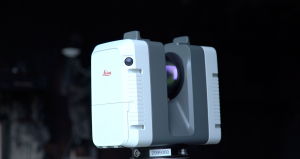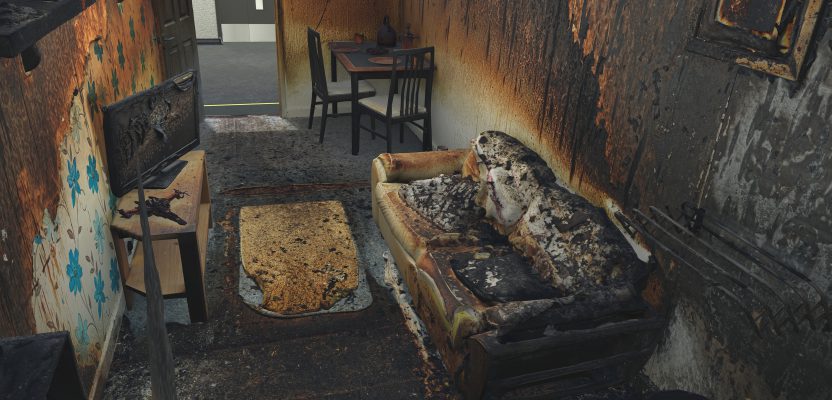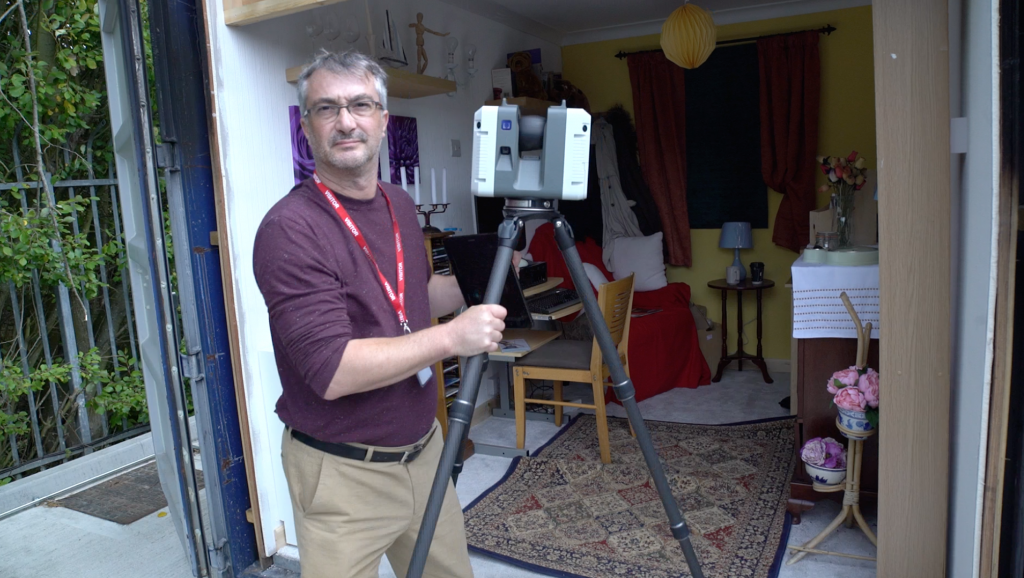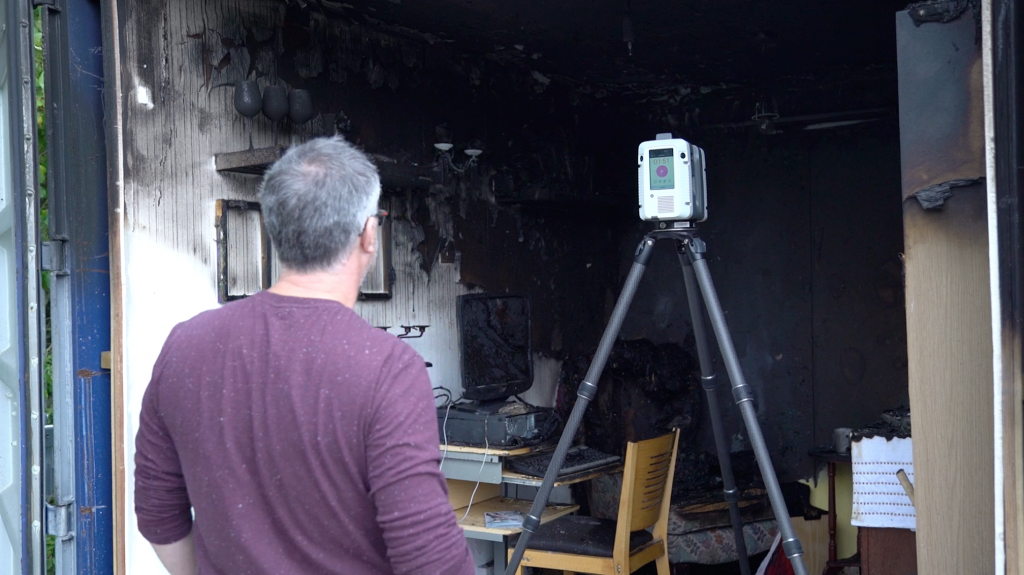Laser scanning helps create effective VR training for public safety in England.
While virtual reality (VR) is commonly associated with video games, it is shaping many industries by opening up a vast array of new possibilities to sell products, experience places, or train employees. VR has multiple applications based on its ability to immerse users in a safe virtual world and help them to fully experience a different environment by involving most senses.
Immersive Training
Reality in Virtual Reality Ltd. (RiVR), a developer of VR experiences in England, is enhancing the way humans learn by offering immersive training and educational programs for all industries. VR-based training programs can immerse users in realistic situations, such as crime or fire scenes that cannot be reproduced easily in real life.
The immersive experience RiVR offers is ideal for applications in the public-safety sector, where VR provides students a way to gain valuable experience for dangerous or life-threatening environments from the safety of a training room.
The Fire and Rescue Service and the Department of Science and Technology Laboratory in the United Kingdom both requested RiVR to produce a hyper-realistic recreation of fire and crime scene scenarios based on real-world events to develop virtual training programs for their trainees. The goal of the training is to prepare students for the appropriate behavior and actions in stressful situations. A Virtual Reality Monitor (VRM) developed by RiVR allows the trainers to observe how the candidates interact with the scene and gives a comprehensive overview of the training session.
Using the Leica RTC360 laser scanner in combination with photogrammetry, RiVR developed life-like virtual environments where the fire and police officers of the future can be trained.
RiVR Investigate
Pioneering with its first product, RiVR Investigate, the company is complementing real-world training of firefighters, police officers, and crime scene investigators with an immersive photorealistic VR experience. RiVR Investigate allows the new recruits to gain exposure in a controlled and consistent way instead of in a real fire or other dangerous situation, which might result in stress and fear for the job.
VR technology also allows police officers and investigators to undertake a range of simulations and recreate any murder scene that would not be possible otherwise.
In the RiVR Investigate training solution, trainees get access to six different fire investigation scenarios, two hazardous material incidents, and two crime scenes. The RiVR software also records all the actions taken by the trainee for review.
Click here to watch a 30-second video from a training scenario.
The team of developers is looking to work with more fire services and police forces to increase the VR scenario library year by year.
Creating Simulations
To transform real-life situations into virtual simulations, RiVR partnered with Leica Geosystems to use the Leica RTC360 to produce high-resolution topology of large scenes. The portable and automated RTC360 empowered the team to document and capture the crime scenes and the burnt-out buildings quickly and in the finest detail.

The Leica RTC360 3D reality capture solution empowers users to document and capture their environments in 3D.
“We use the RTC360 when we scan large environments that don’t lend themselves to photogrammetry,” explained Alex Harvey, creative director at RiVR.
“Then onto the scans, we overlay high-resolution imagery to produce millimeter-accurate photo-realistic environments of any size. We also find the RTC360 useful in environments that are very hard to do a photogrammetry scan, such as a mainly white lab which doesn’t have much randomness [points of reference] to it.”
Capturing Reality to Enhance Learning
Experiencing new challenging environments for the first time, such as a murder scene or a fire, provides valuable context and locational awareness of situations for the candidates, otherwise difficult to replicate without significant costs and risks. With the ability to mirror with millimeter- precision the real world through laser scanning, professionals can create engaging real-life experiences for multiple applications, including photorealistic VR trainings for public safety.
In a BBC Click episode featuring VR applications, Paul Speight, watch manager at Leicestershire Fire and Rescue Service, states that students trained in a VR environment are more engaged. According to a recent study in the United States, retention rate of classes using VR is 75% higher in contrast to 5% when other methods such as slides presentations are used.
VR created with laser scanning and photogrammetry can place users in any number of different places, situations, or environments and can be deployed to teach awareness, build skills, and provide valuable experience to those who risk their lives to help others.
Read Nick Duggan’s overview of the RTC360 here, and click here for his impressions from touring the Leica Geosystems’ facility for the RTC360 in the UK.



